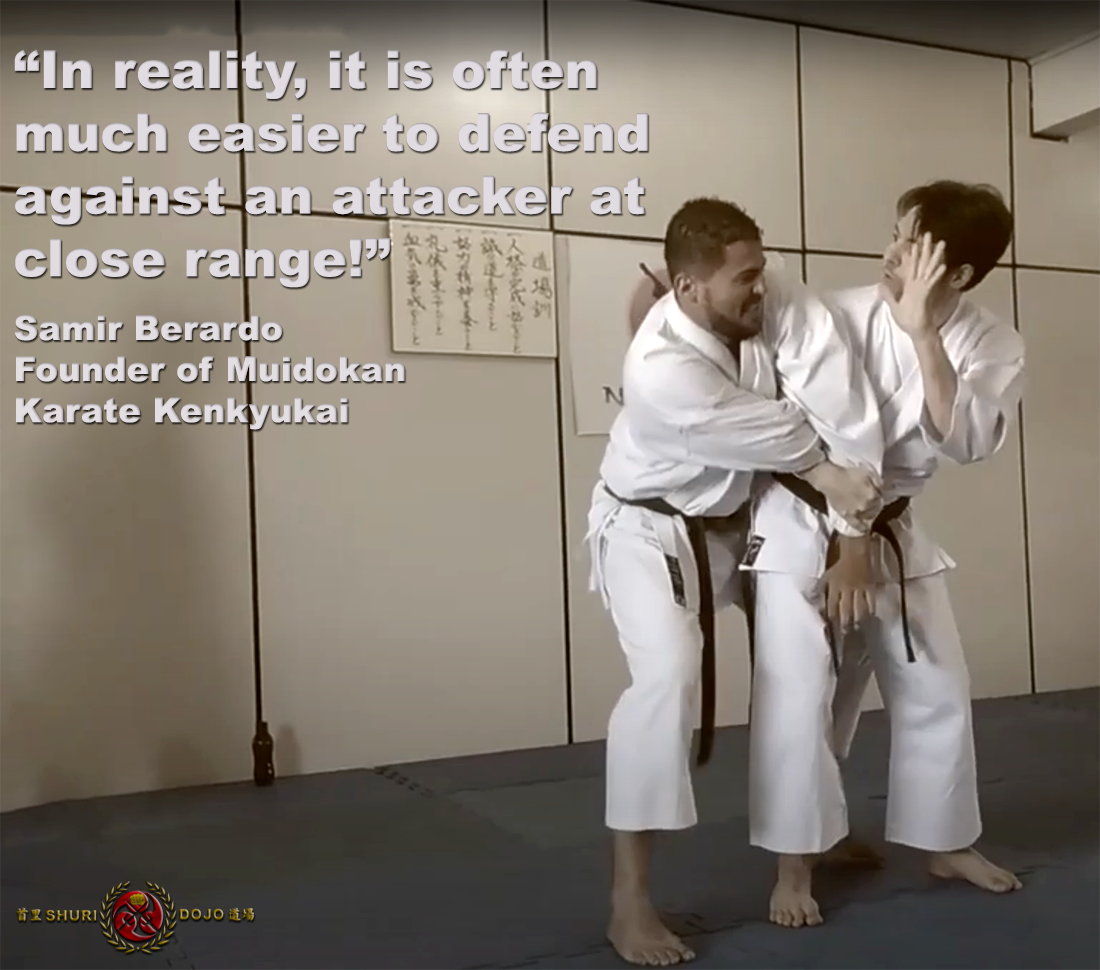
“The first contact is the key. Rather than attacking each other at a distance, the point is how to reduce your own risk. So I make contact most of the time. I want to reduce the possibility of being attacked by the opponent as much as possible. [..] I don’t think you want to let go and reset to where you can attack each other. In the psychology of close combat, I think you will never let it go.” – Tamotsu Miyahira
.
This is a prime example of the differences between fighting and self-defense. Those that want to fight, will usually want to engage with an attacker at their “fighting distance”, so that they can raise their guard, protect their head, prepare to block, throw their punches and kicks, and to keep a relative distance. This is not always the best idea, as you don’t want to give an attacker a second chance (or 3rd or 4th).
.
Miyahira stated that; “I think it’s important how to finish one person in a short time. [..] How you touch the opponent will be key. So the contact becomes information.”
.
The quote at the top by Tamotsu Miyahira is similar to the Okinawan principle of ‘Muchimi’ which is an Okinawan (Hogen) word that refers to adhering to your attacker’s body.
.
The term ‘Muchimi’ is used in traditional karate and refers to the ‘heavy and sticky’ feeling sought during the application of certain techniques and is one of a number of a key principles developed during practice.
.
The combative application of Muchimi can be very effective, and traditionally, there are actually two methods of expressing this principle. (The 2nd method of Muchimi is not shown due to post length restrictions on Instagram)
.
The first of which relates to the level of contact made with the opponent and how that contact is maintained. If used correctly, the opponent should feel overwhelmed by pressure and unable to shake it off. Being sticky and heavy, you can also use it in close range grappling – when you don’t want to lose contact with the opponent.
.
When your strategy of escape has failed, ’stick’ to your attacker. Don’t give them another opportunity to attack. Stay in control…..
.
Either you are close, or far away. Those are the only two options. In between those two, you don’t have control. ![]()
![]()
.
“In reality, it is often much easier to defend against an attacker at close range!” – Samir Berardo – Founder of Muidokan Karate Kenkyukai
.
.
![]() Photo Credit: with thanks to Samir Berardo – with thanks to Chris Denwood
Photo Credit: with thanks to Samir Berardo – with thanks to Chris Denwood
.
